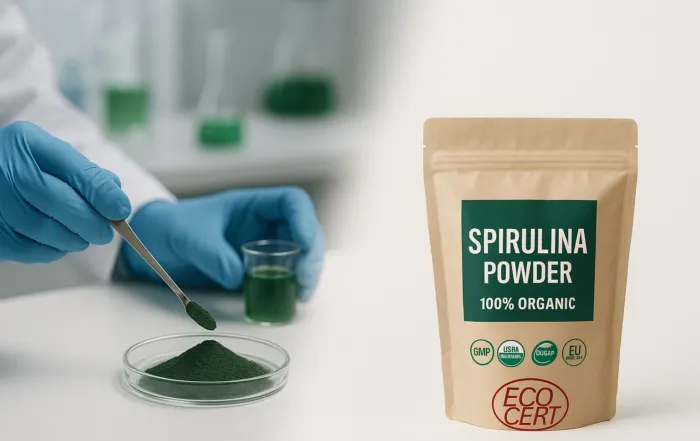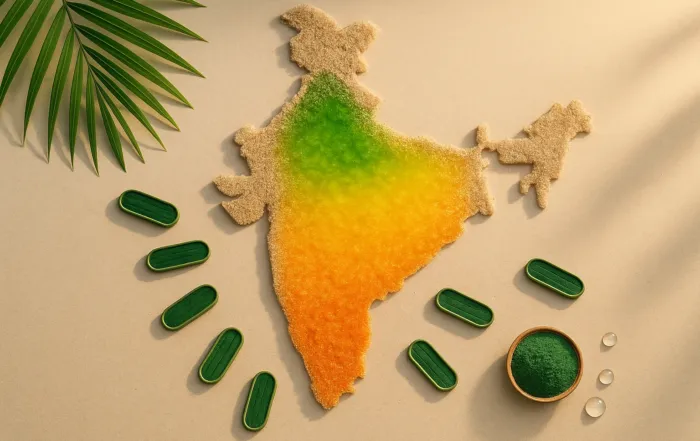Introduction
The global spirulina market is booming, with demand for organic-certified, safe, and high-quality spirulina growing rapidly. Whether it is for human consumption, nutraceuticals, or animal feed, certifications like USDA Organic, HACCP, and GMP are the entry tickets to domestic and international markets. Yet, many manual spirulina farms struggle to meet these stringent requirements. Without automation, in-house labs, and standardized protocols, certification becomes nearly impossible.
This article explains why manual spirulina farms fail certification, the key challenges they face, and how automation and strict compliance can turn failure into success.
The Myth of Manual Spirulina Farming
A common misconception in the spirulina industry is that small, manual farms can secure certifications with minimal effort. Online claims often suggest:
- That basic hygiene and simple records are enough for HACCP or USDA Organic.
- That hand stirring and manual harvesting produce “natural” spirulina suitable for export.
- That minimal investment is sufficient to achieve GMP standards.
In reality, these assumptions are misleading. Manual farms lack the ability to maintain consistency, prevent contamination, and provide the traceability demanded by certification bodies. As a result, they repeatedly fail during inspections and audits.
Certification Standards Explained
To understand why manual farms fail, we must first look at what certifications require:
- USDA Organic: Prohibits synthetic chemicals and requires strict documentation of nutrient sources, growing conditions, and processing methods. Full traceability is mandatory.
- HACCP (Hazard Analysis and Critical Control Points): Focuses on identifying and controlling hazards, including microbial contamination, heavy metals, and unsafe handling practices.
- GMP (Good Manufacturing Practices): Ensures a clean, controlled production environment, minimal human contact with product, and robust quality assurance systems.
Manual farms typically cannot comply with these requirements because their systems are labor-heavy, inconsistent, and prone to contamination.
Why Manual Farms Fail Certification
Hygiene Issues
In manual farms, workers often come into direct contact with spirulina cultures during harvesting, washing, or drying. This human interaction violates GMP standards, which demand a sterile, controlled environment.
Inconsistent Quality
Manual stirring and harvesting result in uneven nutrient distribution, temperature fluctuations, and poor control over growth conditions. This leads to variable product quality, which is unacceptable for USDA Organic certification.
Documentation Gaps
Certifications require automated logging of pH, temperature, and nutrient dosing. Manual farms struggle to maintain accurate records, making it impossible to prove traceability during audits.
Contamination Risks
Manual farms are more vulnerable to pests, bacteria, heavy metals, and other contaminants. Without automated monitoring and preventive measures, spirulina batches often fail lab tests. For more details, see Spirulina Quality Control in Mass Production.
Automation as a Certification Enabler
Automation is not just about reducing labor-it’s the backbone of certification compliance:
- Automated Stirring & Harvesting: Prevents contamination and ensures consistency.
- IoT/SCADA Monitoring: Tracks pH, temperature, and nutrient dosing in real time with digital logs.
- Automated Drying Systems: Maintain ideal temperatures to preserve nutrients, meeting organic compliance.
- Reduced Labor Risks: Less human handling means fewer GMP violations.
Read more about Automation in Spirulina Farming and how it transforms production standards.
Case for In-House Labs & QC
Certifications demand lab-backed evidence for every batch. Manual farms usually lack proper facilities. A HACCP-compliant spirulina facility requires:
- Separate analytical and microbiological labs.
- Testing for proteins, pigments, heavy metals, pesticides, and microbial contamination.
- Generating a Certificate of Analysis (COA) for each production batch.
Without these measures, farms cannot demonstrate compliance. Learn how to build one in How to Build a HACCP-Compliant Spirulina Facility.
Market & Export Impact
The biggest consequence of failing certification is restricted market access. Manual spirulina farms often:
- Cannot export to the US, EU, or premium markets.
- Are rejected by nutraceutical buyers who demand GMP and COA documentation.
- Fetch lower prices in local markets compared to certified organic spirulina.
Meanwhile, certified producers can command higher profits and tap into export opportunities. For scaling challenges and solutions, read Challenges and Solutions in Scaling Spirulina Farming.
FAQs
1. Why is lab testing mandatory for organic spirulina certification?
Because organic certification requires proof of purity, free from heavy metals, pesticides, and microbial contamination. Without lab data, claims are invalid.
2. Can small farms get certified without automation?
It’s extremely difficult. Certifications demand consistency, traceability, and hygiene that manual processes rarely achieve. Small farms must invest in at least partial automation.
3. What are the common contamination issues in manual farms?
Common problems include microbial growth, heavy metals, insect larvae, and cross-contamination from improper handling or equipment.
4. Why do exports reject uncertified spirulina?
International buyers demand USDA/EU Organic, HACCP, or GMP certifications. Without them, spirulina cannot clear customs or meet buyer requirements.
Conclusion
Manual spirulina farms fail certification because they lack the precision, hygiene, and documentation that modern standards demand. From human contact with cultures to poor record-keeping and contamination risks, the obstacles are overwhelming. The path forward is clear: automation, in-house labs, and strict compliance with HACCP, GMP, and organic standards.
For farmers serious about profitability and global reach, certification is not optional-it is the foundation of success in the spirulina industry.





